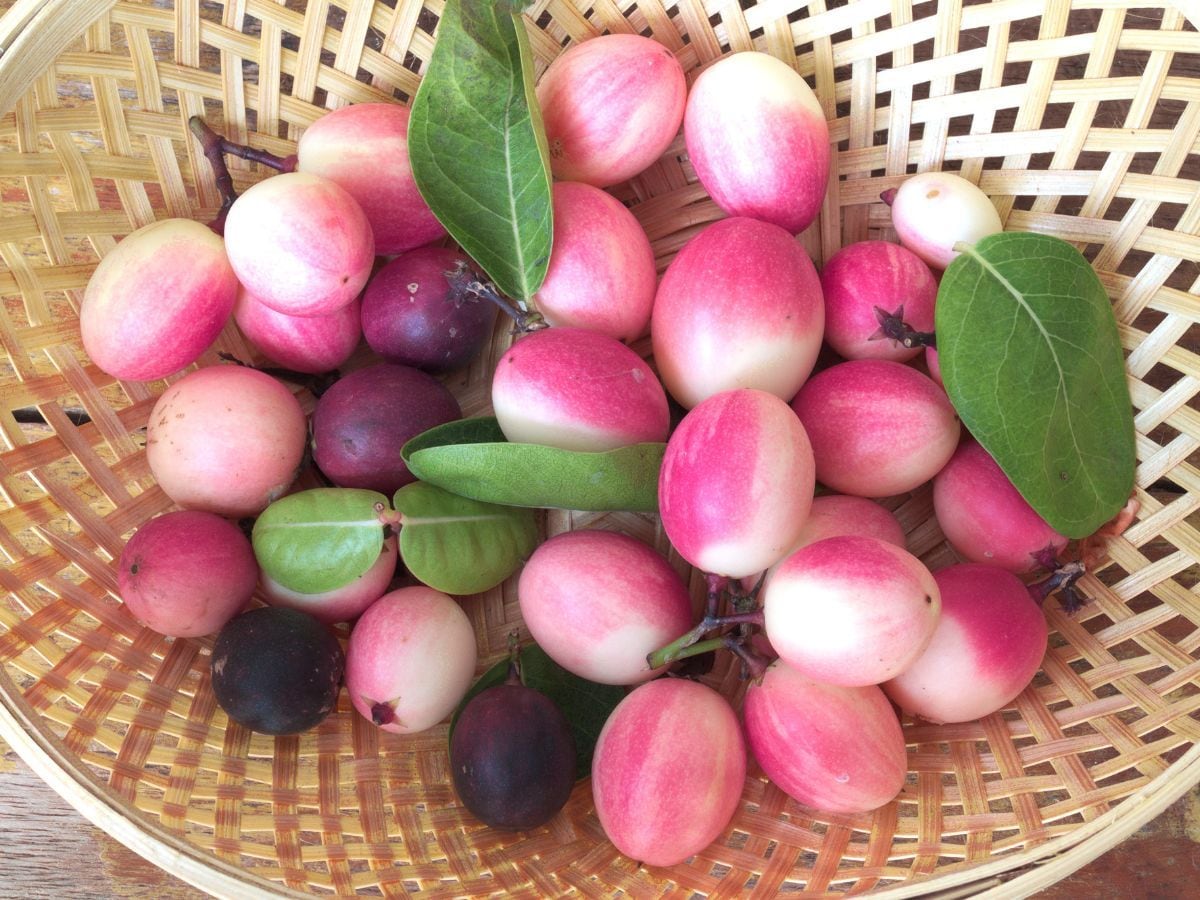[ad_1]
highlights
The origin of gooseberry is believed to be in the western region of India.
Cranberry root kills stomach worms.
There are more than 25 species of gooseberry in the world.
Swad Ka Safarnama: Cranberry, known as a purely citrus fruit, is considered a wild fruit. But now its ‘respect’ has increased. When it is in season, it becomes a part of the Indian kitchen. Its chutney becomes lively and gooseberry pickle is eaten for twelve months in the whole country. It is also used to make other dishes. This is an indigenous Indian fruit and its strings are also connected to Africa. It is also full of virtues. The answer is no in protecting the body from anemia. It also stops the bile growing in the body. Cranberry is very sour and tart in taste, but it is very beautiful to look at.
British rule liked its bushes because
Gooseberry (Karounda/Carissa) actually grows in bushes full of thorns. Till long ago, it was grown on ridges to protect the fields from animals etc. That is, ‘the price of mangoes and kernels of mangoes’ used to be the same. Before the fruit, talk about its dense thorny bushes. The British government in slave India has been convinced of this. History tells that when the salt movement was going on in the country, the British used its bushes as a hedge to keep the agitators away. The British also used the cranberry bush to demarcate the boundaries of different states.
from your city (Delhi-NCR)
There are more than 25 species of gooseberry in the whole world. image-canva
Thousands of years old this sour fruit keeps its interference in the Indian kitchen. Its chutney and pickle are made, as well as it is also used as an ingredient in other dishes like jam, jelly, candy, squash and syrup. According to food experts, there are now more than 25 species of gooseberry in the whole world, out of which five species are native to India. Now it is also cultivated and its demand has increased all over the world. The reason for this is that the experts have become well-acquainted with the properties of gooseberry.
Read this also: Journey of taste: Loquat is very beneficial for the heart, controls cholesterol, history is associated with China
Grown in India and South Africa and spread in the world
The history of gooseberry is thousands of years old. Food historians believe that its origin is believed to be in the western region of India. But it is a live bush fruit, so many of its species have reached many areas as well. From time immemorial, cranberries have also been associated with South Africa. There also the origin of some of its species is considered. Its various species are also believed to be growing in Nepal, Afghanistan, Sri Lanka, Java, Malaysia, Myanmar, Australia and South Africa.
It is said that in ancient times it was also used as a medicinal plant in rural areas. Then the extract of the root is used in chest pain. Extracts of leaves were also used in the treatment of fever. Since this small fruit is full of miraculous properties, it is now widely cultivated in many countries.
Ayurveda also considers gooseberry as a special fruit.
Besides the use of gooseberry in the kitchen, Ayurveda has also recognized its importance. Indian Herbs. According to well-known Ayurveda expert Acharya Balkishan, who has done extensive research on fruits and vegetables, the ripe fruit of cranberry is acidic in nature, bitter, hot, guru, reducer of vata, increases interest in food and also increases thirst. It also has sweet, digestive, bile-reducing properties. It is anti-inflammatory and anti-toxic. Its root kills stomach worms. According to well-known dietician Anita Lamba, gooseberry rich in various acids reduces the toxicity of the body. The special types of vitamins and minerals present in it protect the human body from anemia. It also pacifies the pitta produced by various pressures and tensions in the body. That’s why its extract is used in Unani and Homeopathy treatment.
Read this also: Journey of taste: Kafal keeps stomach diseases away, this mountain fruit is full of antioxidants, history is interesting
There are many specialties in its sourness and pungency
The sourness and pungency of cranberry makes it special. It also has antimicrobial properties. Its proper intake also controls blood pressure. Various acids present inside it also keep the blood clean, due to which the function of the heart remains normal. Its proper intake prevents indigestion and keeps the digestive system of the stomach healthy. The reason for this is that pectin is found in gooseberry. It is a soluble fiber that turns into a gel in the intestines. This does not mess up the digestion system.

There is no side effect of eating gooseberry in a balanced quantity. image-canva
It has also been found in research that anti-inflammatory properties are also found in gooseberry. It also does not allow the internal inflammation of the body to grow. Gooseberry ripens during the summer and remains during the whole rainy season. Then it is advised to eat it, so that the body is protected from seasonal fever. The reason for this is that antioxidant compounds are also found in plenty in it. It also contains calcium which keeps bones and teeth strong. There is no side effect of eating gooseberry in a balanced quantity. Nevertheless, avoid consuming it in excess, because the sourness present in it can affect the teeth and cause gas in the stomach.
First read breaking news in Hindi News18 Hindi| Read today’s latest news, live news updates, most reliable Hindi news website News18 Hindi.
FIRST PUBLISHED : March 26, 2023, 07:01 AM IST
[ad_2]
Source link










